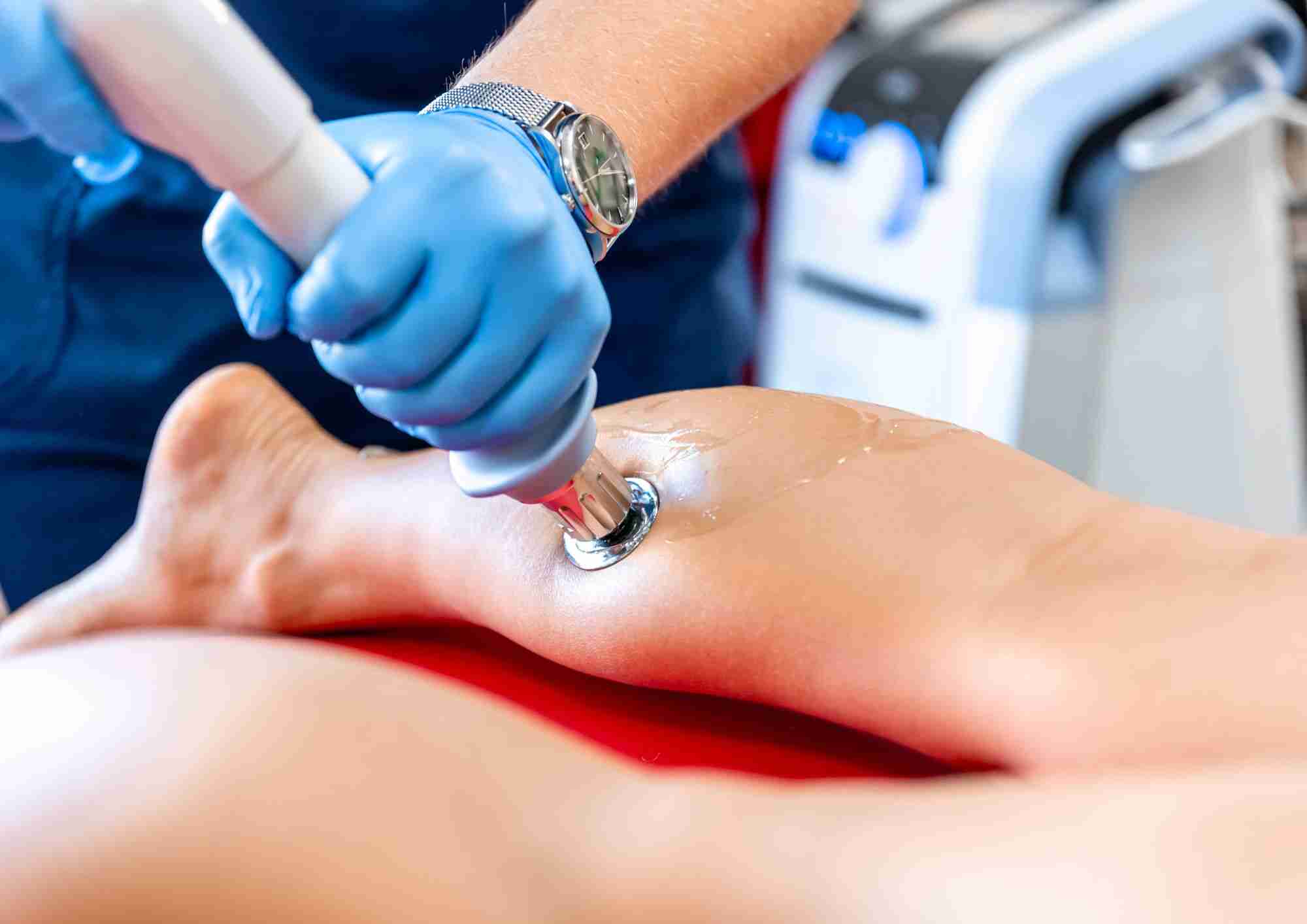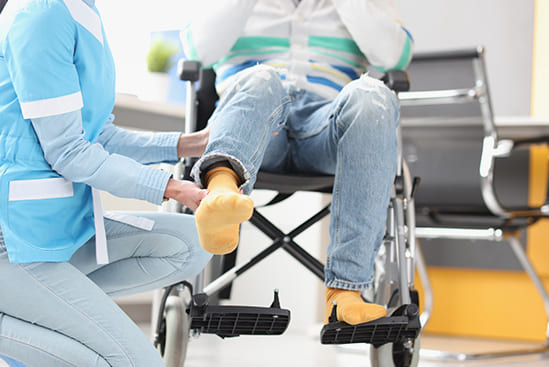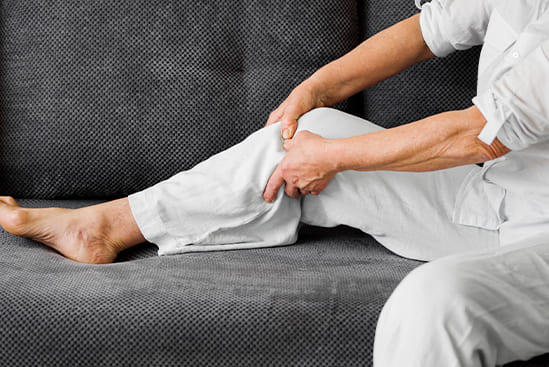
Home Physiotherapy, Neurological Conditions, Sports Injuries, Synapse Physiotherapy
How Shockwave Therapy Helps with Tendon Pain at Synapse
Shockwave therapy is a non-invasive treatment that promotes the body’s natural healing process by stimulating growth factors in injured tendons, ligaments, and soft tissues. It is effective for tendinopathies, ligament injuries, and even breaking down calcium deposits in degenerative conditions. Synapse Physiotherapy offers this advanced regenerative treatment at every branch, making it one of the best conservative solutions for tendon problems.
Understanding Tendon Pain
Tendon pain, also referred to as tendonitis (or tendinitis), is the inflammation or irritation of a tendon that causes swelling, pain, and discomfort. Tendons are strong connective tissues that link muscles to bones, enabling smooth movement. Tendonitis often results from repetitive strain, overuse injuries, or sudden impact.
This condition is most commonly found in areas like the shoulders, elbows, and knees, with pain typically concentrated near the joint where the tendon attaches to the bone. Tendonitis can manifest as acute (short-term) pain due to recent strain or chronic (long-term) discomfort from ongoing stress or degeneration. Early treatment is crucial to prevent worsening symptoms and maintain mobility.
Symptoms of Tendonitis
Tendonitis often presents with symptoms such as:
- Pain localized around the affected tendon and nearby areas, worsening with movement.
- Joint stiffness or difficulty moving the affected area.
- Cracking or popping sensations during movement.
- Swelling, sometimes accompanied by skin discoloration ranging from redness to a darker tone.
In some cases, calcium deposits may develop, appearing as firm white or yellow bumps under the skin. These can cause itching and contribute to more severe or sudden pain.
Common Areas Affected by Tendonitis
Tendonitis can occur at any place where tendons connect muscles to bones. Common locations include:
- The base of the thumb.
- The elbow, particularly on the outer forearm near where the tendon attaches to the elbow.
- Shoulders, hips, and knees, especially below the kneecap.
- The Achilles tendon, which connects the calf muscles to the heel.
Causes of Tendonitis
Tendonitis often results from:
- Overuse or repetitive movements, such as running or throwing.
- Sudden strains or injuries.
- Certain medications, such as cholesterol-lowering statins or specific antibiotics.
Additionally, underlying medical conditions like diabetes, rheumatoid arthritis, gout, osteoarthritis, or infections may contribute to tendon inflammation.
Risk Factors for Tendonitis
Anyone can develop tendonitis, but it is more common in individuals engaged in repetitive activities like:
- Gardening, landscaping, or woodworking.
- Shoveling, painting, or scrubbing.
- Playing sports like tennis, golf, or baseball.
Other factors include poor posture, age-related tendon degeneration, or medical conditions that weaken muscles and joints.
Potential Complications
If untreated, tendonitis can lead to:
- Chronic pain and inflammation.
- Reduced mobility in the affected area.
- Tendon tears (ruptures) or muscle weakness.
Early diagnosis and treatment are essential to prevent these complications and maintain optimal function.
What is Shockwave Therapy?
Shockwave therapy uses sound waves delivered through the skin to target injured areas of the body with a specialized device. These mechanical waves (not electric) improve blood flow to the injury, helping the body heal faster.
The therapy works through several mechanisms, including:
- Encouraging new blood vessel growth at the tendon-bone junction.
- Stimulating the production of tendon and bone-repair cells.
- Increasing the activity of white blood cells to aid in healing.
- Boosting growth factor production, collagen formation, and tissue repair.
This combination of effects promotes faster and more effective recovery from tendon and soft tissue injuries.
Benefits of Shockwave Therapy
Shockwave therapy offers multiple advantages for treating tendon and soft tissue injuries, including:
- Improved Blood Flow
- Promotes the formation of new blood vessels, enhancing blood supply and oxygen to the injured area to aid tissue repair.
- Promotes the formation of new blood vessels, enhancing blood supply and oxygen to the injured area to aid tissue repair.
- Trigger Point Release
- Relieves pain caused by tight trigger points commonly found in the back, neck, shoulders, and limbs.
- Relieves pain caused by tight trigger points commonly found in the back, neck, shoulders, and limbs.
- Reversal of Chronic Inflammation
- Reduces chronic inflammation by increasing mast cell activity, which supports the body’s natural wound-healing process.
- Reduces chronic inflammation by increasing mast cell activity, which supports the body’s natural wound-healing process.
- Breakdown of Calcium Deposits
- Dissolves calcium build-ups that form due to micro-tears or trauma to tendons, alleviating associated pain and stiffness.
- Dissolves calcium build-ups that form due to micro-tears or trauma to tendons, alleviating associated pain and stiffness.
- Reduction of Chronic Pain
- Lowers levels of Substance P, a neurotransmitter linked to persistent, intense pain, resulting in significant pain relief.
These benefits make shockwave therapy a highly effective, non-invasive treatment for various musculoskeletal conditions.
Shockwave Therapy Process and What to Expect
- Initial Physiotherapy Assessment
- Before beginning shockwave therapy, the therapist will conduct a thorough assessment to confirm the diagnosis of tendonitis and determine if shockwave therapy is suitable for your condition.
- Before beginning shockwave therapy, the therapist will conduct a thorough assessment to confirm the diagnosis of tendonitis and determine if shockwave therapy is suitable for your condition.
- Targeted Treatment
- The therapist will identify the precise area that requires treatment and apply a gel to help the sound waves effectively penetrate the skin.
- The therapist will identify the precise area that requires treatment and apply a gel to help the sound waves effectively penetrate the skin.
- Shockwave Delivery
- Using a handheld device, the therapist will deliver shockwaves to the treatment area. This device generates sound waves that stimulate healing.
- Using a handheld device, the therapist will deliver shockwaves to the treatment area. This device generates sound waves that stimulate healing.
- Sensation During Treatment
- While receiving the therapy, you may feel mild discomfort, a tingling, or a snapping sensation. The therapist can adjust the intensity based on your pain tolerance to ensure your comfort during the session.
- While receiving the therapy, you may feel mild discomfort, a tingling, or a snapping sensation. The therapist can adjust the intensity based on your pain tolerance to ensure your comfort during the session.
- Treatment Duration and Frequency
- Each session typically lasts between 5-10 minutes. Most conditions require multiple sessions, spaced over a few weeks, to achieve the best possible results.
- Each session typically lasts between 5-10 minutes. Most conditions require multiple sessions, spaced over a few weeks, to achieve the best possible results.
- Post-Treatment Expectations
- Mild Soreness: You may experience some tenderness or soreness in the treated area, which usually fades within a few days.
- Increased Blood Flow: Shockwave therapy stimulates circulation to the injured area, aiding in the healing process.
- Gradual Improvement: While immediate relief may not be noticeable, continued therapy often leads to gradual pain reduction and better function over time.
Shockwave therapy is a safe, non-invasive way to promote healing and alleviate pain, with noticeable improvements after several sessions.
Who Can Benefit from Shockwave Therapy?
Shockwave therapy is effective for a variety of individuals suffering from tendon and soft tissue injuries. It is particularly beneficial for those who:
- Suffer from Tendonitis: People with conditions like Achilles tendonitis, tennis elbow, or rotator cuff tendinopathy can benefit from shockwave therapy, as it helps reduce pain and promote healing in these common areas.
- Have Chronic Injuries: Individuals experiencing long-term or recurring tendon injuries that have not responded well to other treatments, such as physical therapy or medication, may find shockwave therapy especially helpful.
- Prefer Non-Surgical Treatment: Those looking for a non-invasive, non-surgical approach to treat tendon pain will benefit from shockwave therapy, as it avoids the need for costly and invasive procedures.
- Athletes and Active Individuals: Athletes and individuals who frequently engage in physical activities, such as running, tennis, or weightlifting, are at higher risk for tendon injuries and can recover faster with shockwave therapy.
- Patients Seeking Faster Recovery: Individuals looking to speed up their recovery time from injuries and get back to daily activities or sports more quickly will find shockwave therapy effective in enhancing the healing process.
However, shockwave therapy may not be suitable for everyone, such as those with certain medical conditions or pregnant individuals. A proper assessment by a healthcare professional at Synapse Physiotherapy will determine whether this treatment is appropriate for you.
Conclusion
Shockwave therapy is a highly effective, non-invasive treatment for relieving tendon pain and promoting healing. Whether you’re dealing with chronic tendonitis, recovering from an injury, or seeking a faster recovery, Synapse Physiotherapy offers this cutting-edge therapy to help you get back to your normal activities. With expert care and multiple session options, we’re here to provide lasting relief from tendon pain. Reach out to us today and experience the benefits of shockwave therapy at Synapse Physiotherapy!
Tags :

Back & Neck Pain
Conditions such as stiffness, postural abnormalities and muscle overuse from prolonged desk work at the office or home is more prevalent than most would think. We provide the necessary tools to fix you up and educate you on ergonomics which can unload unnecessary stress.
- Spine & Core Rehabilitation
- Strength & Conditioning Programme
- Pain Management
- Biomechanical Assessment
- Sports Physiotherapy
- Group Class

Sports Injuries
Rolled ankles, jarred knees, impinged shoulders are few conditions in the plethora of sports injuries which can hamper performance and limit our enjoyment of sports. Physiotherapy not only treats the symptoms of these conditions but propels your overall fitness to greater heights.
- Strength & Conditioning Programme
- Pain Management
- Biomechanical Assessment
- Sports Physiotherapy
- Shockwave Therapy
- Group Class

Work Desk Injuries
Conditions such as stiffness, postural abnormalities and muscle overuse from prolonged desk work at the office or home is more prevalent than most would think. We provide the necessary tools to fix you up and educate you on ergonomics which can unload unnecessary stress.

Pre-Post-Surgical Conditions
Surgery involves going through preparation both before and after. Physiotherapists play a vital role in getting your body ready for surgeries with circulatory, breathing and strengthening exercises. After the procedure, let us be there for your recovery and rehabilitation, taking it one step at a time.

Scoliosis & Postural Abnormalities
The way we stand, sit, walk and sleep has influence over our posture and the overall balance of muscles controlling its alignment. A comprehensive screening can be done by our physiotherapists to detect abnormalities, which we will aid in correcting.

Neurological Conditions
Neurological disabilities such as stroke, nerve compression and neuropathies can be barriers for patients to live life to its fullest. We at Synapse are committed to help you overcome these hurdles by ensuring functional mobility and quality of life is at its optimum by providing the right treatment and exercises.

Osteoarthritis & Rheumatism
Joint degeneration and inflammation happens as the human body grows older, but that does not mean our way of life degenerates as well. Relief your joint pains with a joint effort together with your physiotherapist, who will provide pain-relief treatments and prescribe exercises for your wellbeing.

Conditions Relating To Elderly
Common conditions in the older age population include hips & knee pain, back & neck pain, osteoarthritis, rheumatism, fear of falling and many more. Aging and degeneration of bodily function is inevitable, but here at Synapse, we will help you live the best of your life.

Home Physiotherapy
We understand that some conditions or injuries can make it difficult to receive rehabilitation at our clinic be it mobility or transportation issues. Our objective is to provide you with the same high-quality physiotherapy services at home that you would receive in-clinic.
